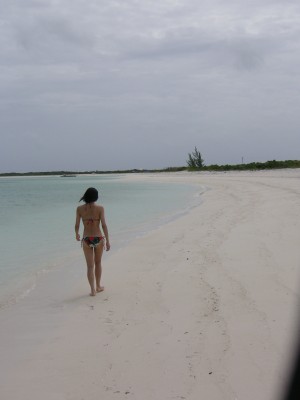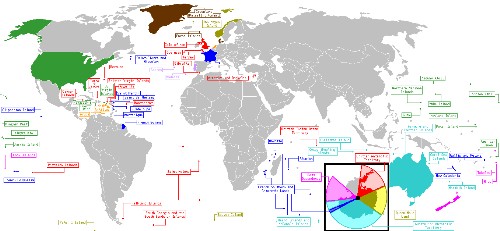 In the lost paradise isles of the Turks and Caicos an empty curve of icing-sugar sand gives way to the salty tongue of turquoise surf. Distant white caps crash mute on the barrier reef, where dolphin and stingray cruise in endless procession.
In the lost paradise isles of the Turks and Caicos an empty curve of icing-sugar sand gives way to the salty tongue of turquoise surf. Distant white caps crash mute on the barrier reef, where dolphin and stingray cruise in endless procession.
The island of Providenciales and the smaller cayes are host to upper crust resorts and the posh vacation homes of Bruce Willis, Donna Karan, and my friends Nitro frontman Jim Gillette and rock diva Lita Ford. But the majority of the territory is made up of quiet backwater islands, far from the all-inclusive hordes. Outside the secretive getaways of the super rich, life goes on as it always has, on island time.
Turks and Caicos is best known as an offshore banking center which boasts zero income and property tax as a perk of residency or incorporation. It’s also separated from its Caribbean neighbours by one other interesting relationship: its ties to the British Empire. The Union Jack flies over Government House on the tiny far south island of Grand Turk. British Civil Law reigns in the wig-clad high courts, and the Queen’s birthday celebration is still the biggest national holiday. That’s as far as the Empire extends, however. Quaint out of place British throwbacks end at Grand Turk’s reef-sheltered fringes. The rest of the chain is flat, scrub-covered, lethargic Caribbean.
Most people believe colonialism died out in the aftermath of the Second World War. Few apart from geographers and hardcore travelers realize there are 61 colonies and dependencies extant in the world today. This list does not include non self-governing entities such as Western Sahara or Tibet.
France is the leader when it comes to overseas territories, with 16 scattered across the Pacific and Indian Oceans, the Caribbean Sea, the top of mainland South America, and even one off the coast of Newfoundland. France is closely followed by the UK with 15, and the United States with 14 located in the Caribbean and the Pacific. Other “master” nations include Australia, Denmark, The Netherlands, New Zealand, and Norway.
When it comes to breadth, the sun still fails to set on the British Empire. Its territories span the Atlantic, Caribbean, Pacific, and Indian Oceans and include holdings right next to Europe (the Channel Islands) as well as lands as far south as the Antarctic (the South Georgia and South Sandwich Islands).
 Colonies and territories are among the most challenging places in the world to visit. Some are only accessible by private transportation, and others can only be reached by government or military ship. Travel to these places takes deep pockets and great determination, which is why the colony list is the crown jewel of Century Club members (an exclusive clique of people who have visited at least 100 countries).
Colonies and territories are among the most challenging places in the world to visit. Some are only accessible by private transportation, and others can only be reached by government or military ship. Travel to these places takes deep pockets and great determination, which is why the colony list is the crown jewel of Century Club members (an exclusive clique of people who have visited at least 100 countries).
For those who have been absolutely everywhere, the world’s most remote colonies and dependencies are the obvious next step.

Don’t forget Canada as a colony of UK (looking at the face on our money) 😉
Ryan, I recommend “How to Hide an Empire” to explain the accumulation of so many territories by the US:
https://millionmilewalker.com/2023/11/how-to-hide-an-empire-a-history-of-the-greater-united-states-by-david-immerwahr-reviewed-by-mark-d-walker/
Cheers,
Mark
Interesting, thanks. I’ll keep an eye open for that.